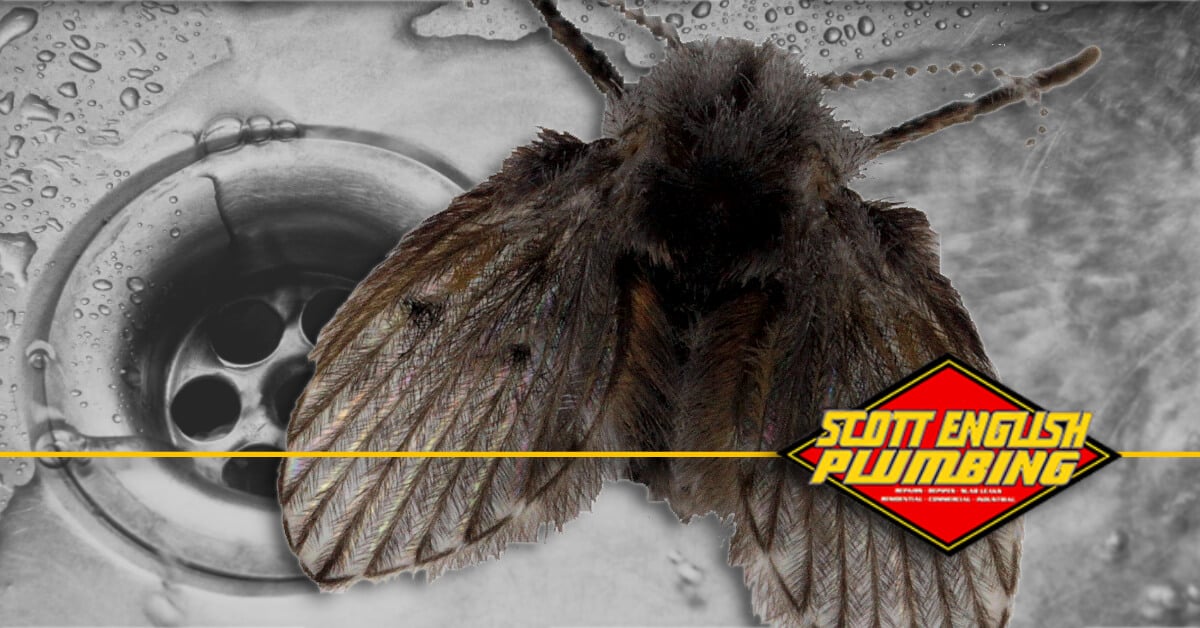How to Get Rid of Drain Flies

Have you ever walked into your kitchen or bathroom in the morning to discover little flies hovering around your drains? If you have, then you most likely have a drain fly infestation. That’s right; flies can live, thrive, reproduce, and die all in your drain lines. In this post, we’ll talk about what causes these sewer-dwelling pests and the steps you can take to eradicate them. So, without further ado, let’s get started!
What are Drain Flies, and are they Dangerous?
Drain flies — also known as drain moths, sewer flies, and filter flies — are flying insects that feed on decomposing organic matter in your drains. They’re often found hovering around drains and showers. However, they can also live in exposed sewage, near septic tanks, and in other areas with standing water and decomposing organic matter.
Since the insects don’t bite or sting, they aren’t at all dangerous on their own. However, due to their environment, they can carry several species of harmful bacteria and viruses commonly found in sewage and other decomposing organic material. So, in light of that information, they’re far from wanted house guests.
How to Get Rid of Drain Flies Yourself
Okay, now that you know what drain flies are and the risks they pose to your health and safety, it’s time to talk about what you can do to get rid of the little nasties. Eradicating these flies is only a two-step process.
Step 1 – Make Sure You’re Actually Dealing With Drain Flies
Drain flies are not the only species of insect that you may find hovering around your sinks and shower. In fact, fruit flies are often mistaken for them due to their proclivity to feed on decomposing fruits and vegetables. So, before we get into how to get rid of them, we should first talk about how to determine whether or not your insect problem is due to drain flies in the first place.
Luckily, checking for drain flies is relatively simple. All you have to do is put a few pieces of tape, sticky side down, over the opening of the drain to be tested. Leave the tape overnight and check it in the morning. If you find flies stuck to the bottom side of the tape, then you most likely have drain flies.
Step 2 – Thoroughly Clean the Infested Drain
Once you’ve determined that your insect problem is due to drain flies, it’s time to get rid of the little buggers. The best way to rid your home of these pests is to clean out the drains where they live and reproduce thoroughly. However, regular drain cleaning techniques may not be enough to get rid of the pests permanently. To clean your drains for pest eradication, you will need to do the following:
First, Use Hot Water: The first thing you should do when getting rid of drain flies is to pour at least one gallon of hot water down the drain. Warm water helps to break up any grime and gunk that the flies use for food or to hatch their eggs. You can also use a wire drain brush to help break up the dirt and gunk further than hot water will on its own.
Next, Use Gel-Based Drain Cleaner: Normally, we wouldn’t recommend you put gel-based drain cleaners in any of your pipes. However, due to their high concentration of bleach, gel-based drain cleaners are great at killing the flies and their larva. Gel cleansers are also great at removing the remainder of the gunk and grime that they live in. Leave the drain cleaner solution in your drains for several hours.
Finally, Flush Your Drain with Water: After you’ve let the gel-based drain cleaner sit in your pipes for a few hours, its time to flush your drains clean. Run water through the drains for a solid fifteen minutes. Doing so will help to make sure none of the residual gel-based drain cleaner remains in your drain line.
Once you’ve completed the previously mentioned steps, test your drain for drain flies by using tape again. If you find new flies the next morning, then repeat the process until they’re gone for good.
